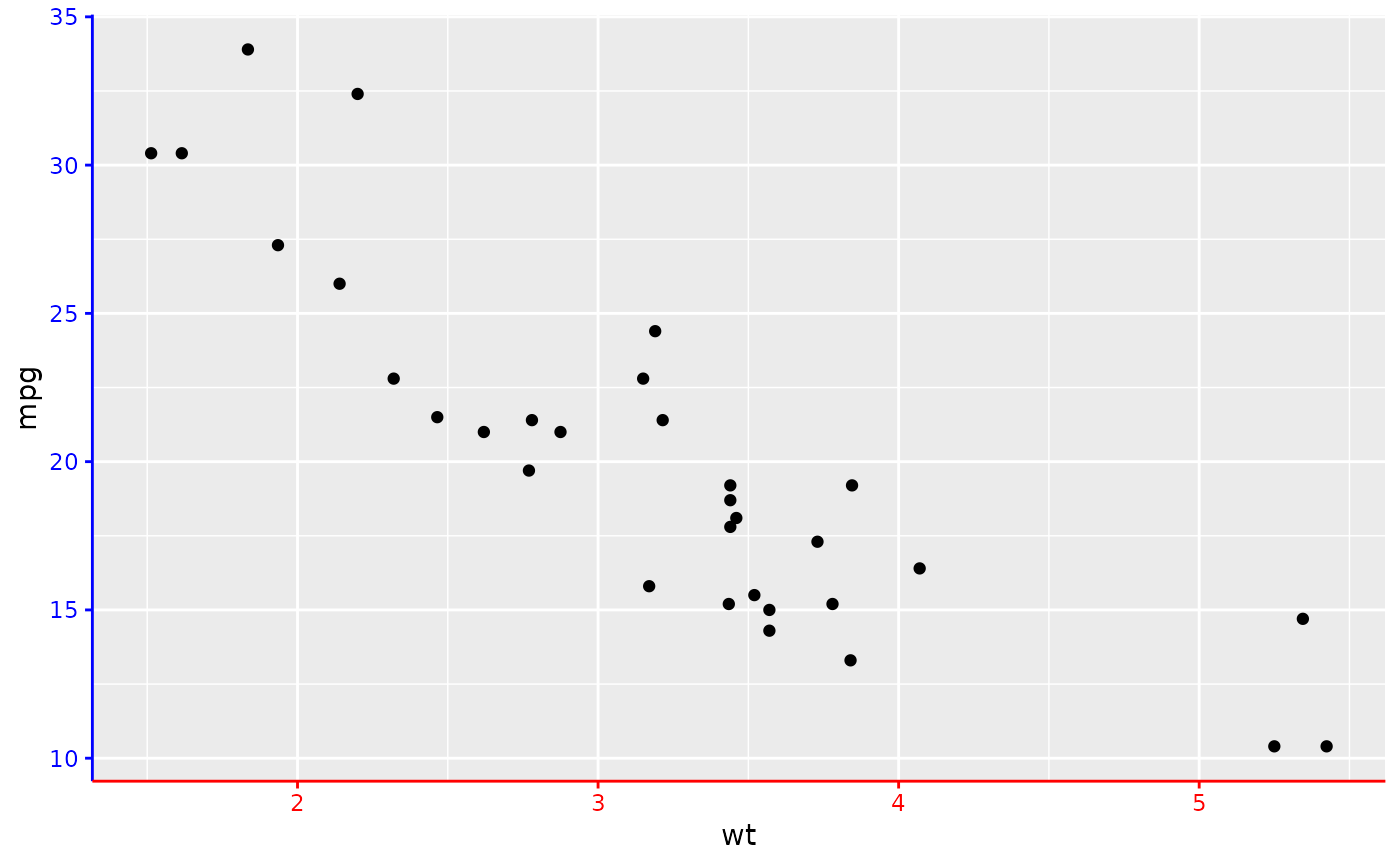This axis guide is similar to the normal axis guides for position scales, but
can shorten the axis line that is being drawn. The
guide_axis_colour()
function is the same but with different defaults for the truncation that do
not truncate the axis. Axis truncation and recolouring is supported
throughout axes in ggh4x.
The function is deprecated as ggplot2::guide_axis(cap = TRUE) has this
functionality now.
guide_axis_truncated(
title = waiver(),
check.overlap = FALSE,
angle = NULL,
n.dodge = 1,
order = 0,
colour = NULL,
color = NULL,
trunc_lower = min,
trunc_upper = max,
position = waiver()
)
guide_axis_colour(
title = waiver(),
check.overlap = FALSE,
angle = NULL,
n.dodge = 1,
order = 0,
colour = NULL,
color = NULL,
trunc_lower = NULL,
trunc_upper = NULL,
position = waiver()
)
guide_axis_color(
title = waiver(),
check.overlap = FALSE,
angle = NULL,
n.dodge = 1,
order = 0,
colour = NULL,
color = NULL,
trunc_lower = NULL,
trunc_upper = NULL,
position = waiver()
)Arguments
- title
A character string or expression indicating a title of guide. If
NULL, the title is not shown. By default (waiver()), the name of the scale object or the name specified inlabs()is used for the title.- check.overlap
silently remove overlapping labels, (recursively) prioritizing the first, last, and middle labels.
- angle
Compared to setting the angle in
theme()/element_text(), this also uses some heuristics to automatically pick thehjustandvjustthat you probably want. Can be one of the following:NULLto take the angles andhjust/vjustdirectly from the theme.waiver()to allow reasonable defaults in special cases.A number representing the text angle in degrees.
- n.dodge
The number of rows (for vertical axes) or columns (for horizontal axes) that should be used to render the labels. This is useful for displaying labels that would otherwise overlap.
- order
A positive
integerof length 1 that specifies the order of this guide among multiple guides. This controls in which order guides are merged if there are multiple guides for the same position. If 0 (default), the order is determined by a secret algorithm.- colour, color
A
character(1)with a valid colour for colouring the axis text, axis ticks and axis line. Overrules the colour assigned by the theme.- trunc_lower, trunc_upper
The lower and upper range of the truncated axis:
NULLto not perform any truncation.A
functionthat takes the break positions as input and returns the lower or upper boundary. Note that also for discrete scales, positions are the mapped positions asnumeric.A
numericvalue in data units for the lower and upper boundaries.A
unitobject.
- position
Where this guide should be drawn: one of top, bottom, left, or right.
Value
An axis_ggh4x guide class object.
See also
Other axis-guides:
guide_axis_logticks(),
guide_axis_manual(),
guide_axis_minor(),
guide_axis_nested(),
guide_axis_scalebar()
Examples
# Make a plot
p <- ggplot(mtcars, aes(wt, mpg)) +
geom_point() +
theme(axis.line = element_line(colour = "black"))
# Setting the default truncated axis
p + guides(x = "axis_truncated")
#> Warning: `guide_axis_truncated()` was deprecated in ggh4x 0.3.0.
#> ℹ Please use `ggplot2::guide_axis(cap = TRUE)` instead.
#> ℹ The deprecated feature was likely used in the ggplot2 package.
#> Please report the issue at <https://github.com/tidyverse/ggplot2/issues>.
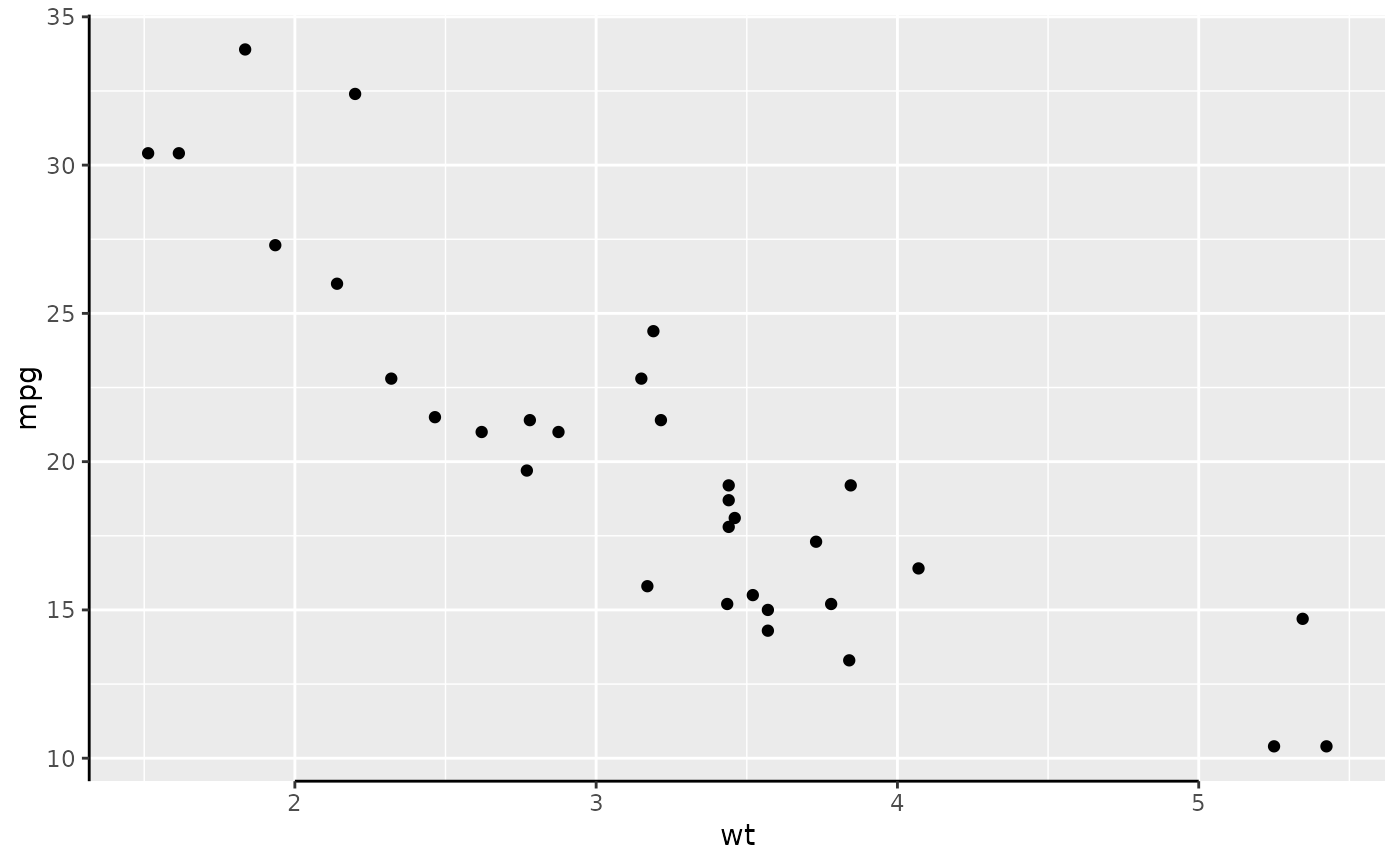 # Truncating in data units
p + guides(x = guide_axis_truncated(
trunc_lower = 2.5, trunc_upper = 4.5
))
# Truncating in data units
p + guides(x = guide_axis_truncated(
trunc_lower = 2.5, trunc_upper = 4.5
))
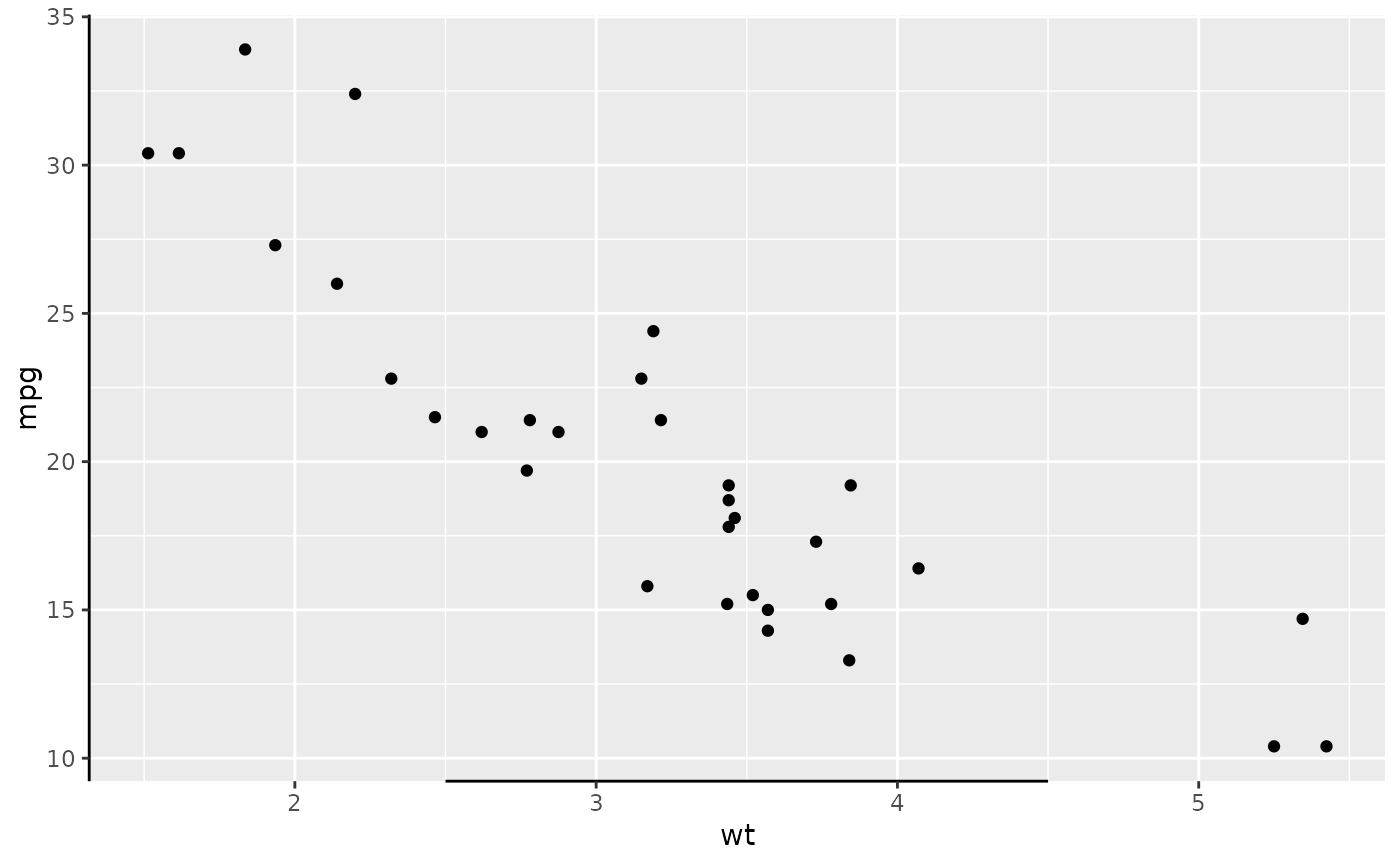 # Truncate by setting units
p + guides(x = guide_axis_truncated(
trunc_lower = unit(0.1, "npc"),
trunc_upper = unit(0.9, "npc")
))
# Truncate by setting units
p + guides(x = guide_axis_truncated(
trunc_lower = unit(0.1, "npc"),
trunc_upper = unit(0.9, "npc")
))
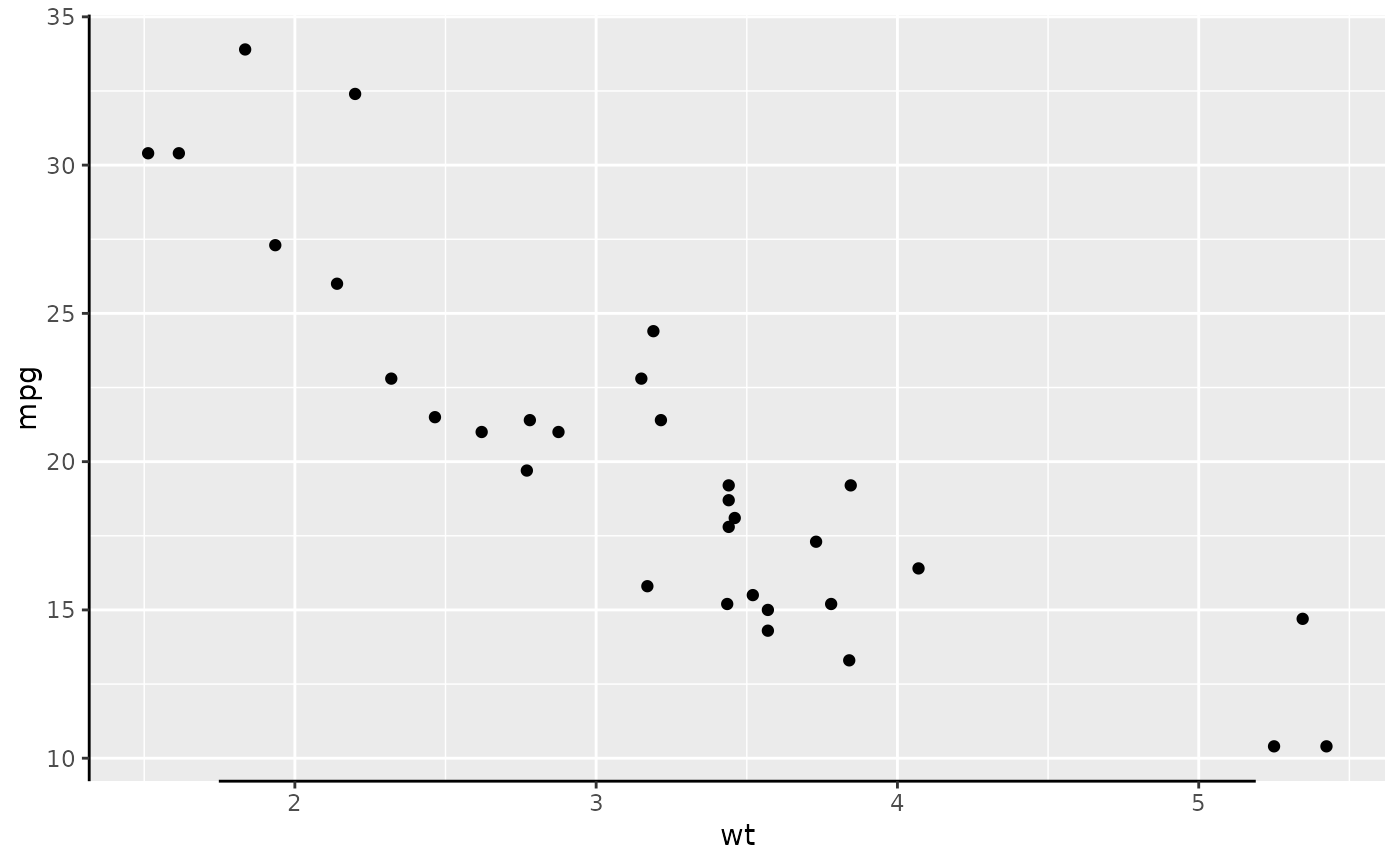 # Truncating with functions
p + guides(x = guide_axis_truncated(
trunc_lower = function(x) {x - 0.2},
trunc_upper = function(x) {x + 0.2}
))
# Truncating with functions
p + guides(x = guide_axis_truncated(
trunc_lower = function(x) {x - 0.2},
trunc_upper = function(x) {x + 0.2}
))
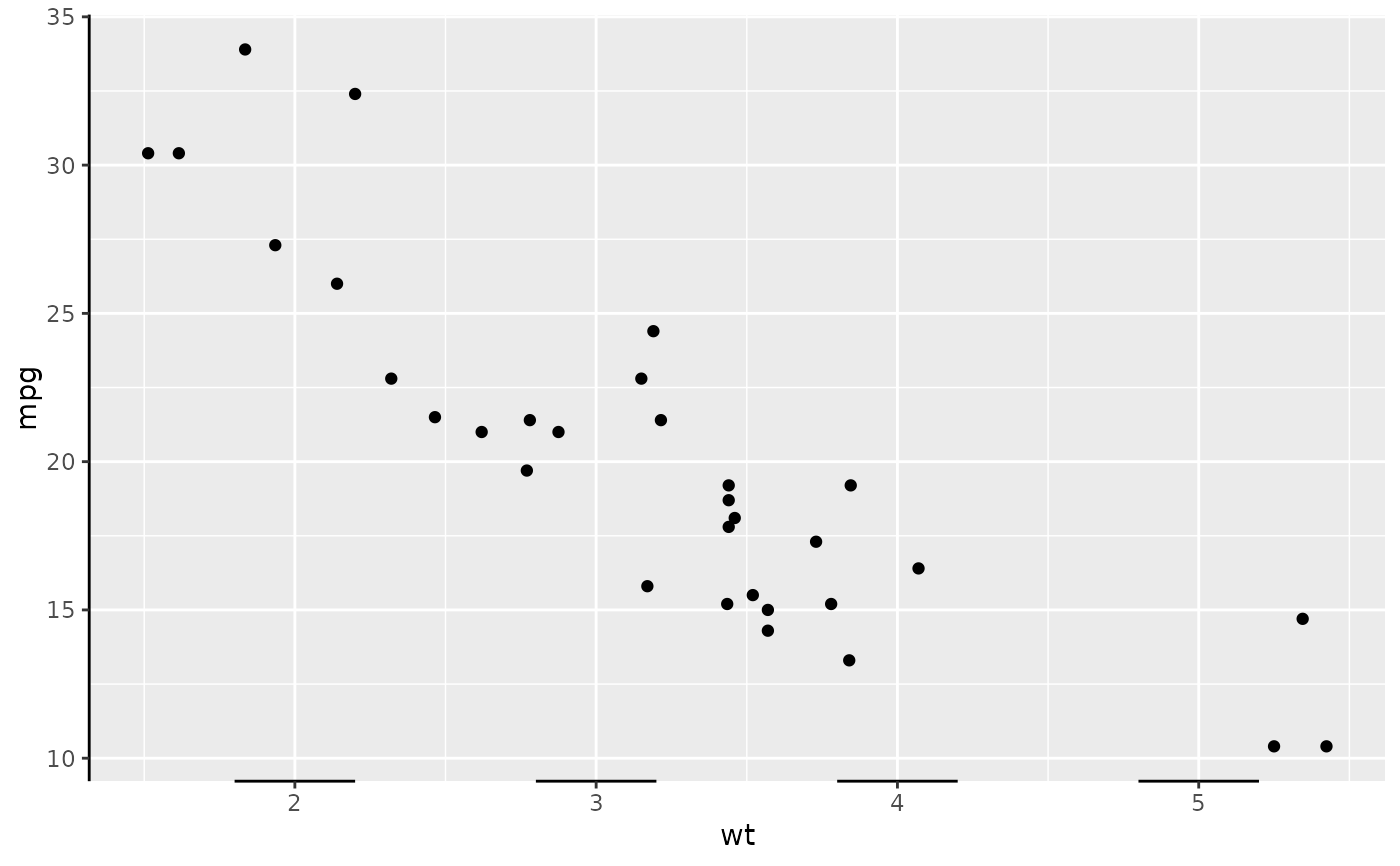 # Recolouring the axes outside the theme
p + guides(x = guide_axis_colour(colour = "red"),
y = guide_axis_colour(colour = "blue"))
# Recolouring the axes outside the theme
p + guides(x = guide_axis_colour(colour = "red"),
y = guide_axis_colour(colour = "blue"))
